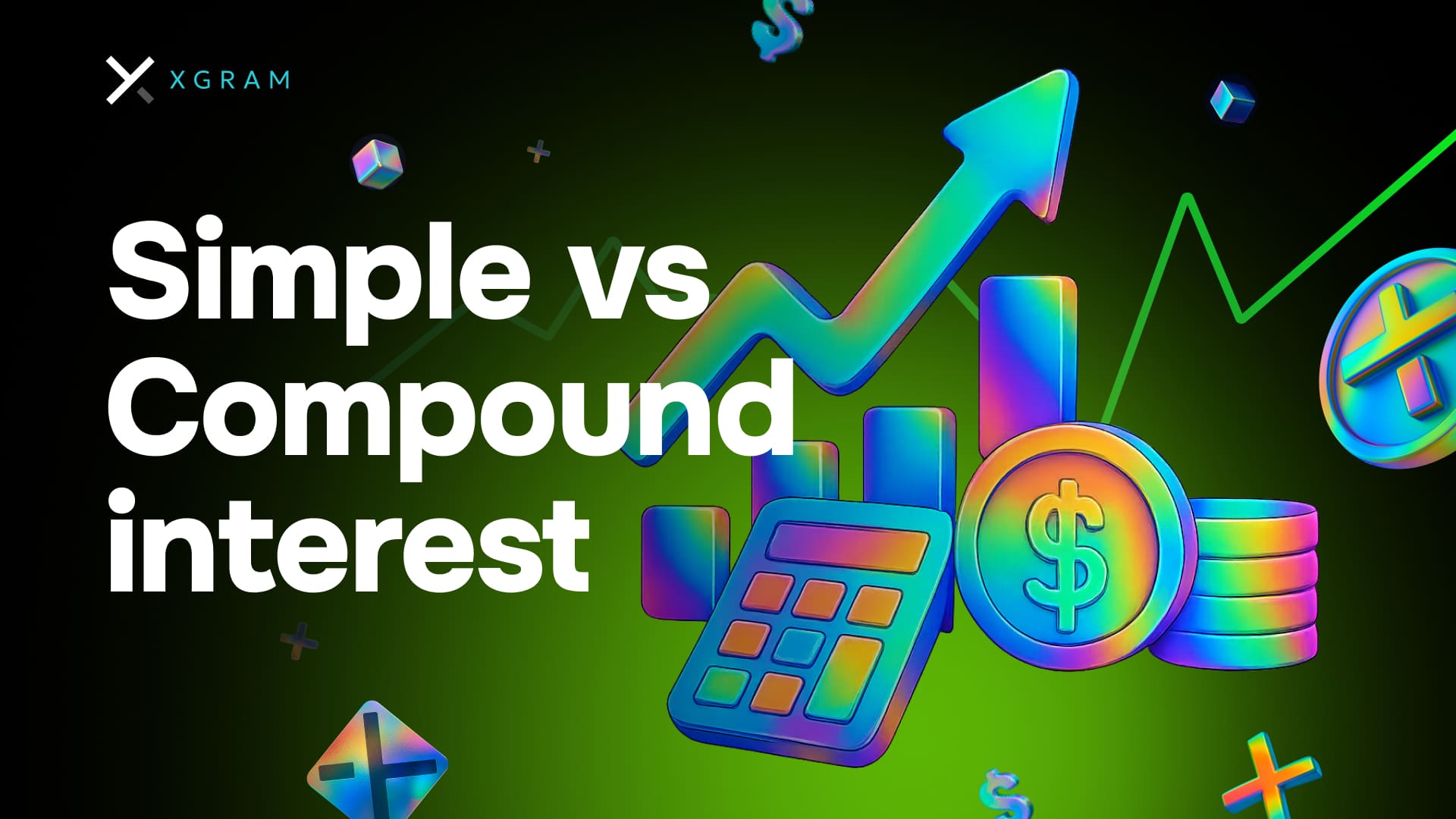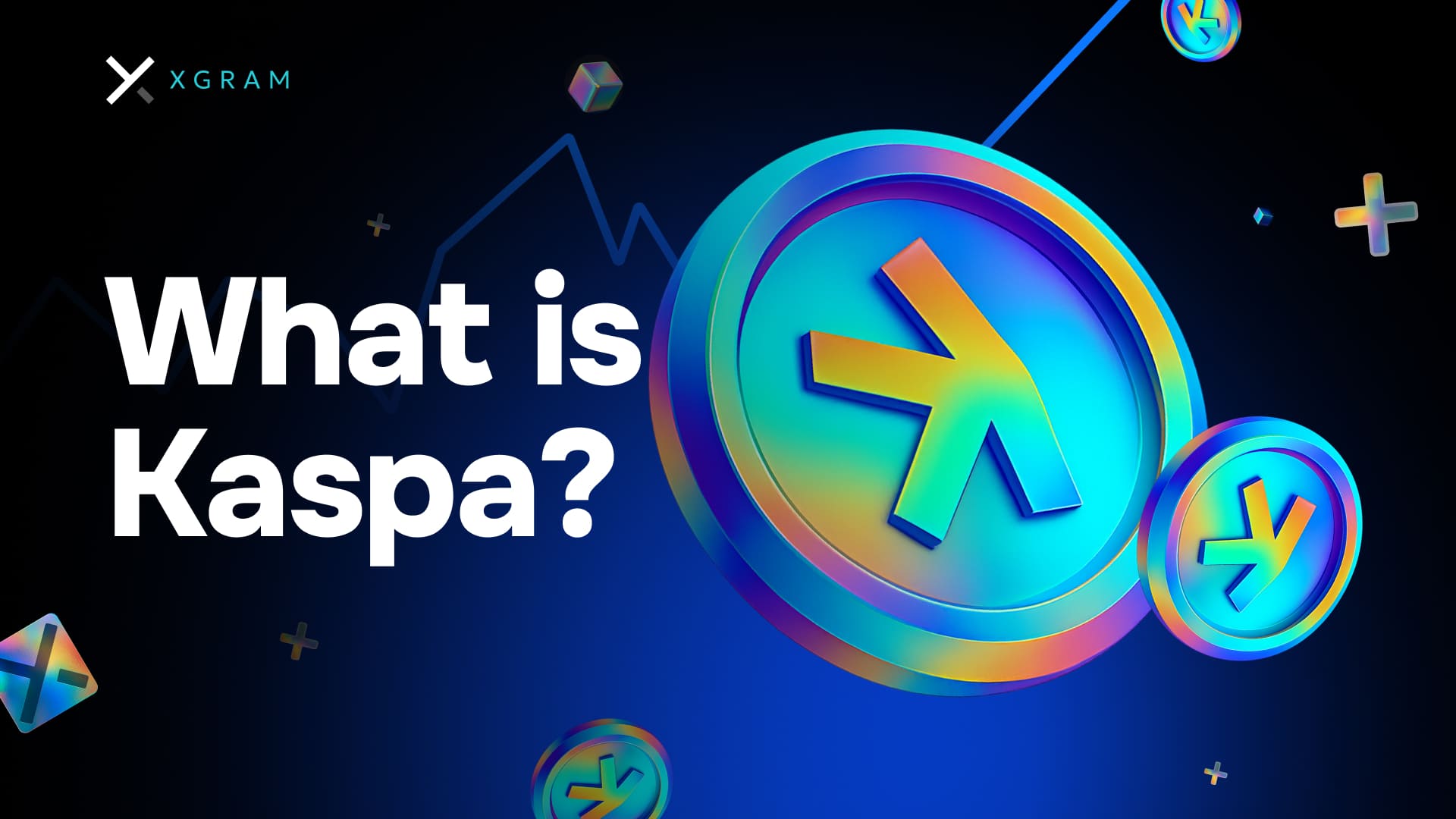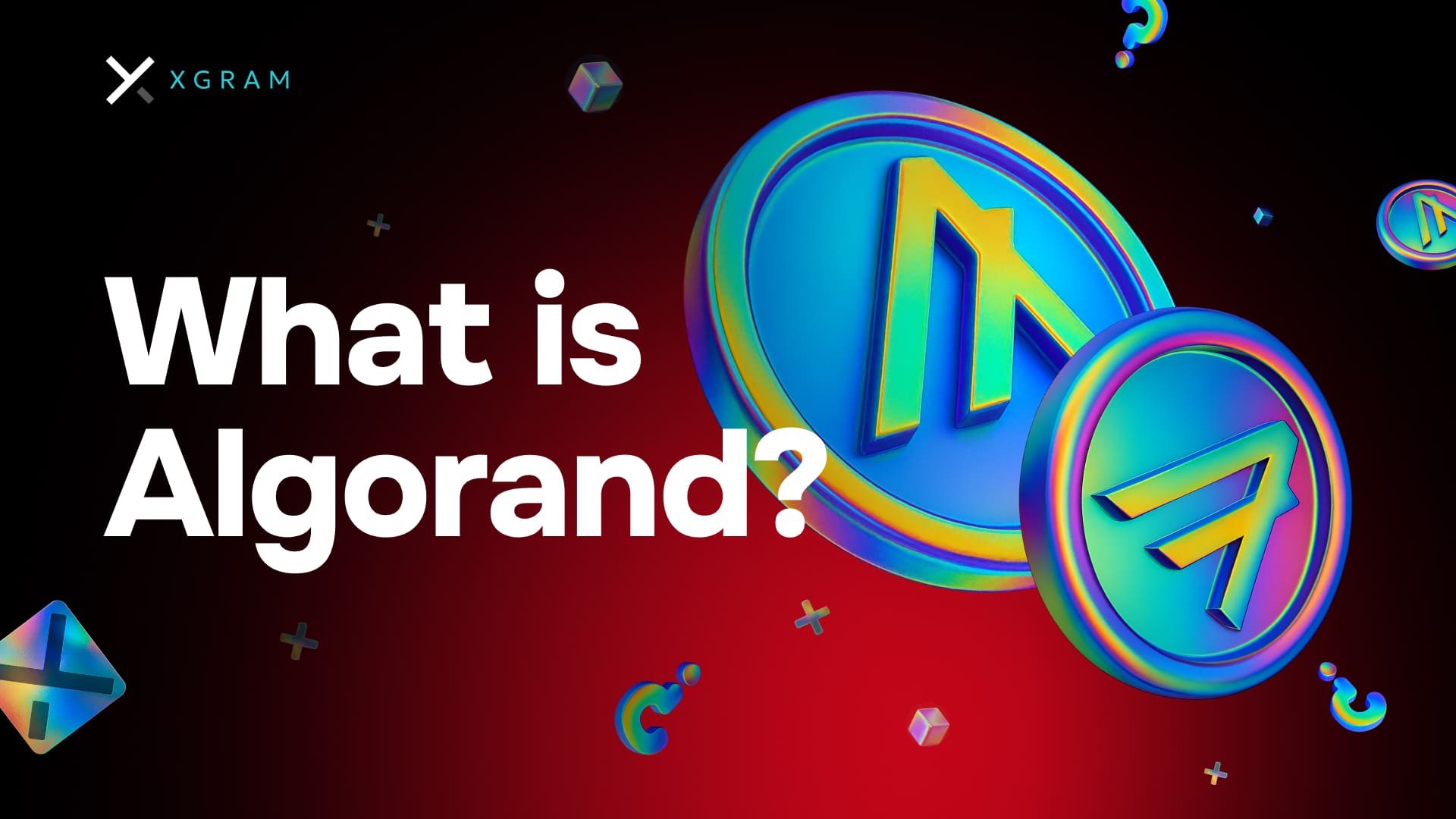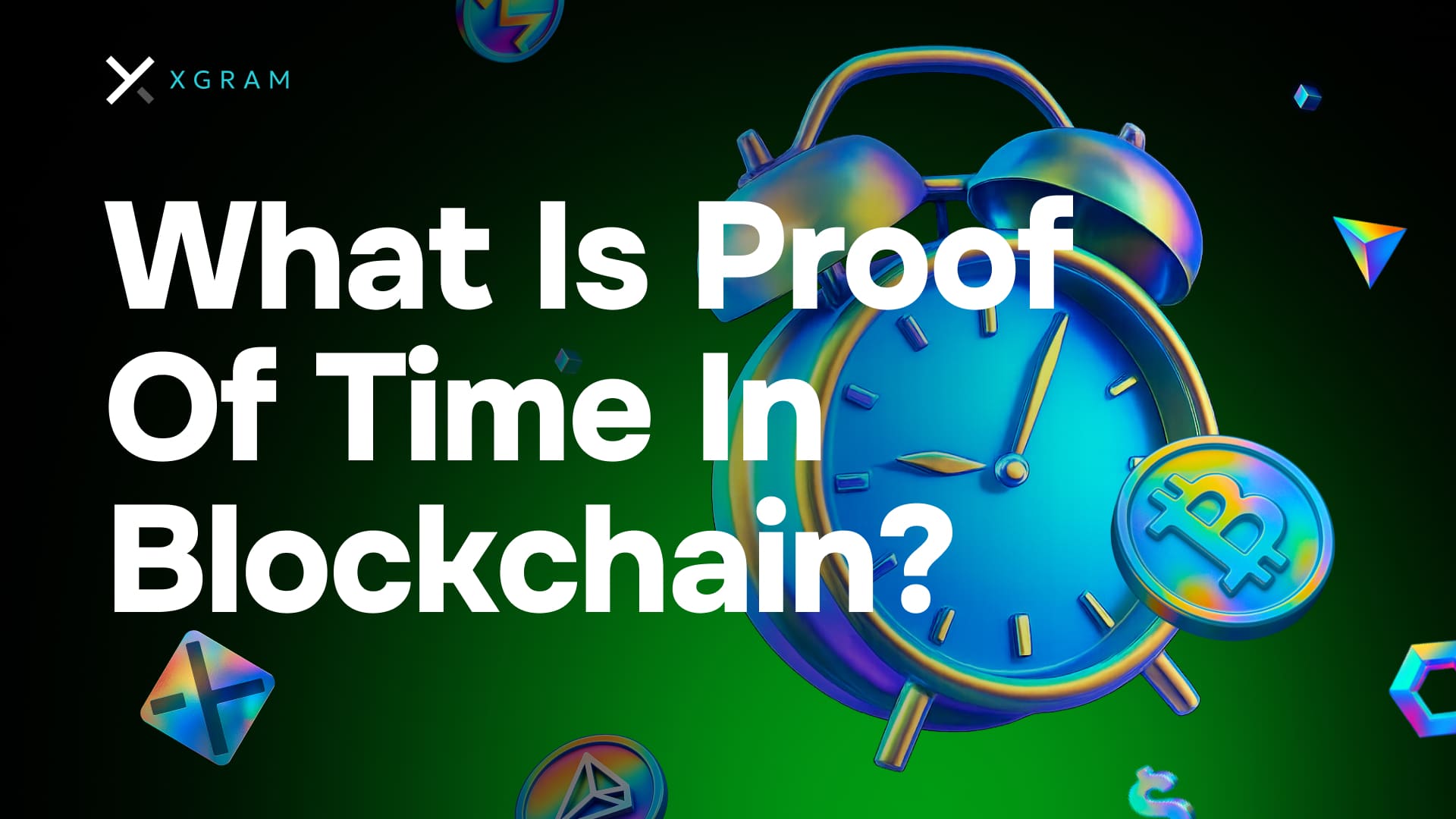When you’re looking to grow your crypto portfolio, you often come across a critical choice: simple vs compound interest. Understanding how these two interest models work can help you maximize earnings and make smart decisions about staking, lending, or otherwise investing in digital assets. Below, you’ll see exactly how each method impacts your balance over time and why it matters for your overall crypto strategy.
Understand the basics
A solid grasp of interest mechanics helps you spot the best earning opportunities. Whether you’re exploring DeFi platforms, staking tokens, or using more traditional methods, you want to ensure your money (or crypto) is always working to your benefit.
What is simple interest?

Simple interest is the most straightforward way to calculate returns. With simple interest, you earn interest on your initial deposit or principal only. That means:
- Your interest payment usually stays constant, because the principal doesn’t change.
- You don’t see an exponential jump in your earnings, though you get predictable returns.
- It’s common in certain peer-to-peer lending arrangements and shorter-term deposit accounts.
An example can help. Suppose you deposit $1,000 at a 5% annual simple interest rate. After one year, you’ll earn $50. Year two, you also get $50. By year three, again $50. There’s no reinvestment of the interest, so it’s a linear, predictable growth. If you’re interested in short-term commitments and want a clear idea of what you’ll earn, simple interest provides a stable option.
What is compound interest?
Compound interest follows a different gain trajectory. Here, your earned interest is regularly added to your principal. That means your principal grows bigger each cycle, and your future interest payments increase in tandem. This reinvestment effect:
- Channels every interest payment into principal, so your money (or crypto) grows faster.
- Intensifies over time with more compounding periods.
- Appears in savings accounts, staking plans, and many yield-farming strategies.
For example, if you start with $1,000 at 5% annual compound interest, you get $50 in interest the first year. In the second year, though, your principal is now $1,050, so 5% nets you $52.50. Each year, your earnings get layered on top of what you already have. Over decades or even just a few years, that growth can blossom far beyond simple interest totals.
Compare simple vs compound interest
You want a clear head-to-head look at these two interest models. Below is a quick snapshot of their key differences:
| Factor | Simple interest | Compound interest |
|---|---|---|
| Calculation approach | Interest based on your initial principal alone | Interest based on your principal plus accumulated interest |
| Growth pattern | Linear, predictable increments | Exponential, with each cycle building on the last |
| Use cases | Short-term lending, quick loans, some P2P arrangements | Longer-term staking, savings, yield farming |
| Cash flow implications | Steady payments over time | Increasing payments as principal grows |
| Risk profile | Generally lower risk due to stable returns | Higher potential returns, but needs careful oversight |
Each column can be appropriate for you, depending on your strategy:
- Simple interest is consistent and transparent. You know the exact interest rate and quantity up front. If you prefer minimal risk, or you need to access your funds repeatedly, simple interest often supplies stable earnings without complicated reinvestment cycles.
- Compound interest magnifies your returns over longer periods. By continually reinvesting earnings, you might see growth accelerate in surprising ways. It usually works best when you’re comfortable locking in your funds so the compounding effect can do its job.
Connect it to crypto investments
In the world of digital assets, interest is not just a bank phenomenon. Crypto staking, yield farming, and lending protocols all have their own take on simple vs compound interest. Many platforms let you lock up coins or tokens like ETH, BNB, or stablecoins, offering an annual percentage yield (APY) that is typically based on compounding. Some smaller platforms might still offer simple interest structures for short-term deposit programs.
- Staking: You hold (stake) your crypto in a particular network to support operations like validating transactions. Many staking rewards are compounding because each batch of rewards is added to your staked amount.
- Lending platforms: Some yield protocols pay you in real time, adding your earnings to your principal. That can snowball your balance if you keep it locked in.
- Liquidity pools: If you provide liquidity in a DeFi ecosystem, you might receive tokens that themselves can be staked or reinvested.
Be mindful of fees, market fluctuations, and lock-up periods, because a compounding approach always works best if you can reinvest for as long as possible. If you must withdraw at a moment’s notice, or if the platform’s volatility is extreme, a simpler approach with lower risk might feel safer.
Factor in P2P on crypto exchanges

Many crypto exchanges support peer-to-peer (P2P) trading, allowing you to buy and sell digital assets directly with other users. You often see:
- Flexible interest offers where you lend crypto to other users.
- Quick short-term loans with an agreed-upon interest or fee.
- An arrangement that might look like simple interest if you only earn a fixed monthly payout.
In fact, most major crypto exchanges have P2P sections for people seeking local fiat trades or direct user-to-user swaps. Typically, if you want to keep the arrangement short or you only have spare funds for a couple of weeks, simple interest feels practical. But if you’re comfortable locking in your funds for longer, some P2P setups let you repeatedly roll over your interest, look for more favorable rates, and approximate a compounding effect.
Spot cross-chain opportunities with Xgram
Sometimes, you’ll find an exchange or aggregator that allows you to perform cross-chain transactions while saving on fees. One such platform you might explore is Xgram.
This cross-chain flexibility becomes especially valuable for compound interest strategies, where you want to optimize every opportunity and keep fees in check. Even if you decide simple interest is more your style, you can still use xgram to shift among blockchains that offer simpler, more predictable yield programs.
Decide which interest approach suits you
When picking between simple vs compound interest, let your situation guide you. Here are some key questions to ask yourself:
- How long can you commit your funds?
- With compound interest, you typically want to give it time to grow. If you need frequent access to your assets, a simple-interest approach might be more convenient.
- What is your risk tolerance?
- Compound interest can yield bigger gains, but crypto market swings might cause your principal to fluctuate in value. If you prefer predictability or have a shorter time horizon, simple interest could be a better fit.
- How do you feel about fees and complexity?
- Compounding often involves reinvesting your earnings, which can mean extra fees on certain blockchains. Simple interest is often literally set-it-and-forget-it, with fewer complicated steps.
- Do you plan to move your crypto often?
- Pulling your funds in and out of compounding protocols might disrupt your gains. On the other hand, a short-term simple interest deal with a P2P lender won’t penalize you as much if you switch directions.
If you’re an active DeFi enthusiast or a dedicated investor, compound interest can pay off handsomely. If you’re a “set it and leave it” type who wants minimal hassle, you can still benefit from compound interest by choosing reputable platforms that automatically reinvest. Otherwise, if your focus is short-term stability, a simple option keeps your returns consistent and accessible.
5 FAQs
Below are five frequently asked questions about simple vs compound interest, especially in a crypto context.
- Will simple interest ever outperform compound interest?
- In the short term, or in very volatile markets, simple interest might outperform if compounding fees become too high or the markets dip. Longer term, though, compound interest usually produces higher overall gains if the price of your chosen assets remains stable or grows.
- Is it complicated to manage compound interest in crypto?
- It can be, but many platforms automate the compounding process for you. Just keep an eye on fees, and be sure to diversify your assets so you don’t lock everything into one protocol.
- Do I need a large principal to benefit from compounding?
- Not necessarily. Even a moderate deposit can pick up speed when reinvested regularly. However, if fees are proportionally large, smaller balances might see less benefit.
- Should I worry about lock-up periods?
- Yes. Some compound interest offers in crypto come with mandatory lock-up timelines. Know your exit strategy before you commit. Simple interest accounts or short-term P2P loans are often more flexible.
- How do I pick a reliable interest-bearing platform?
- Look at security records, community feedback, and whether the protocol has been audited. If you’re unsure, start small, test the withdrawal process, and measure your earnings over a few weeks before committing larger sums.
Final thought
Choosing between simple vs compound interest is about clarity, risk tolerance, and the time commitment you can comfortably manage. In crypto, compound interest can amplify returns, but you must weigh factors like fees, lock-up periods, and market conditions. Meanwhile, simple interest still has its place for short-term, predictable gains. Ultimately, it’s your decision whether to chase exponential growth or focus on low-risk stability. When you align your choice with your goals and stay informed about changing market conditions, you set yourself up for a more confident investing journey.




